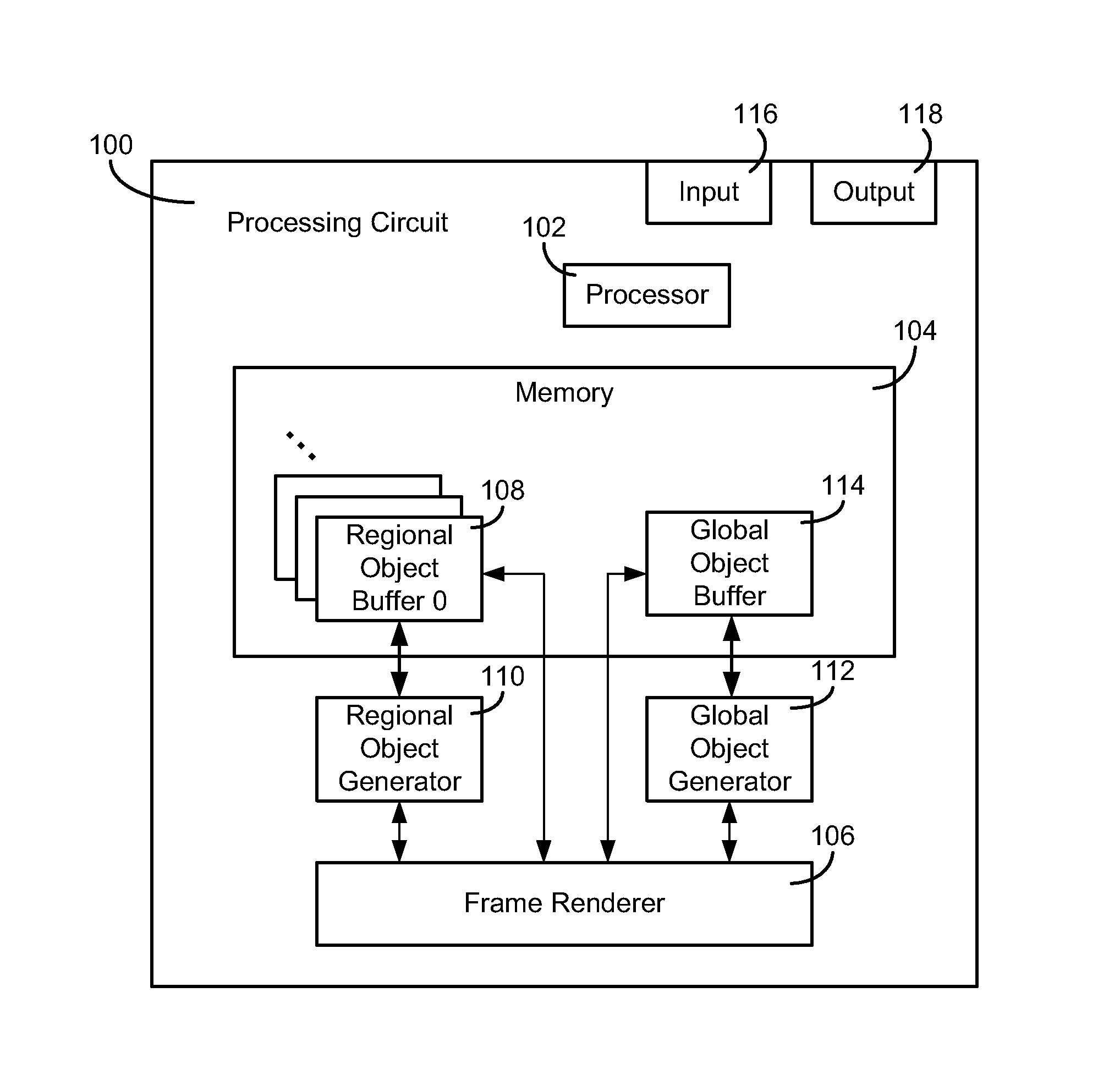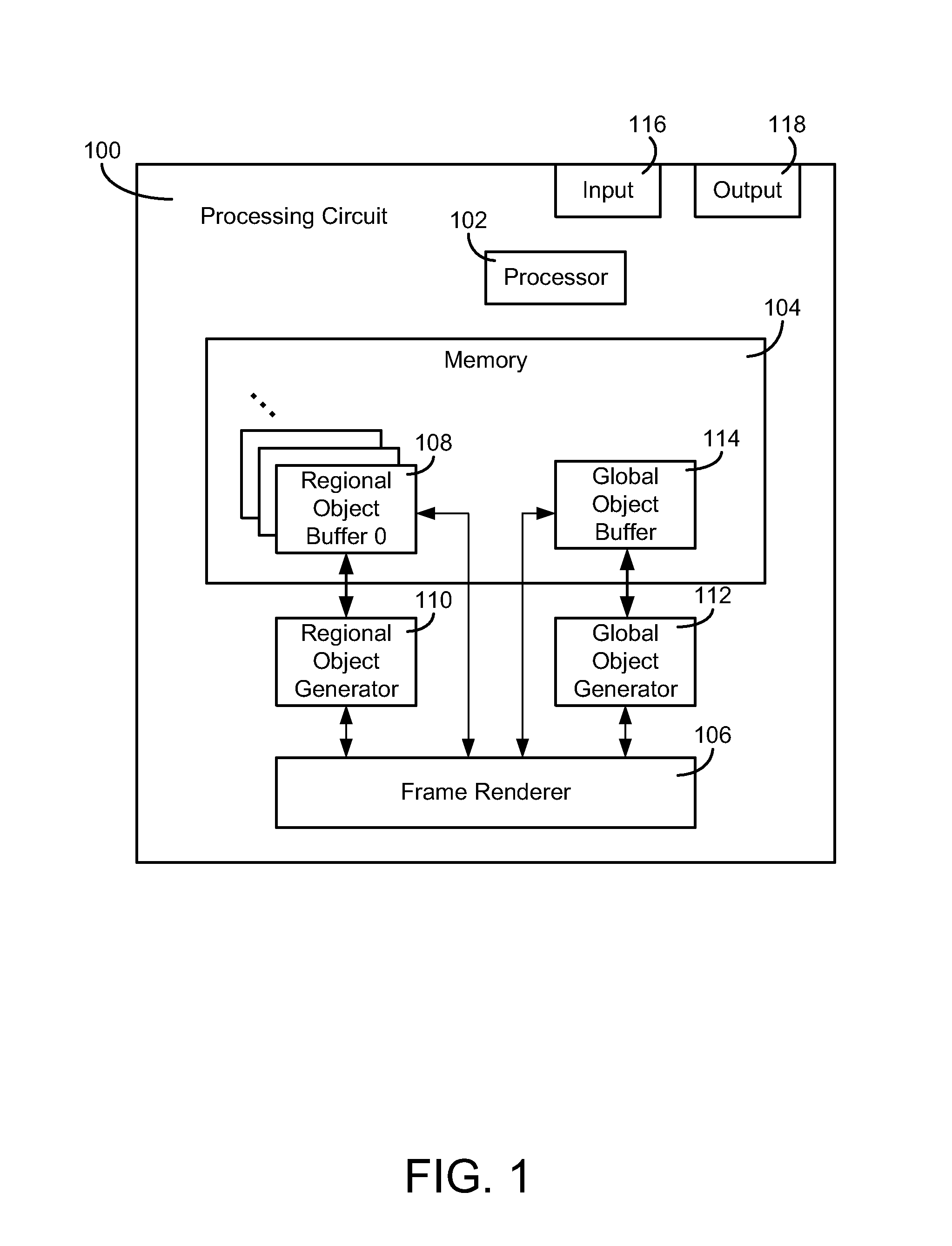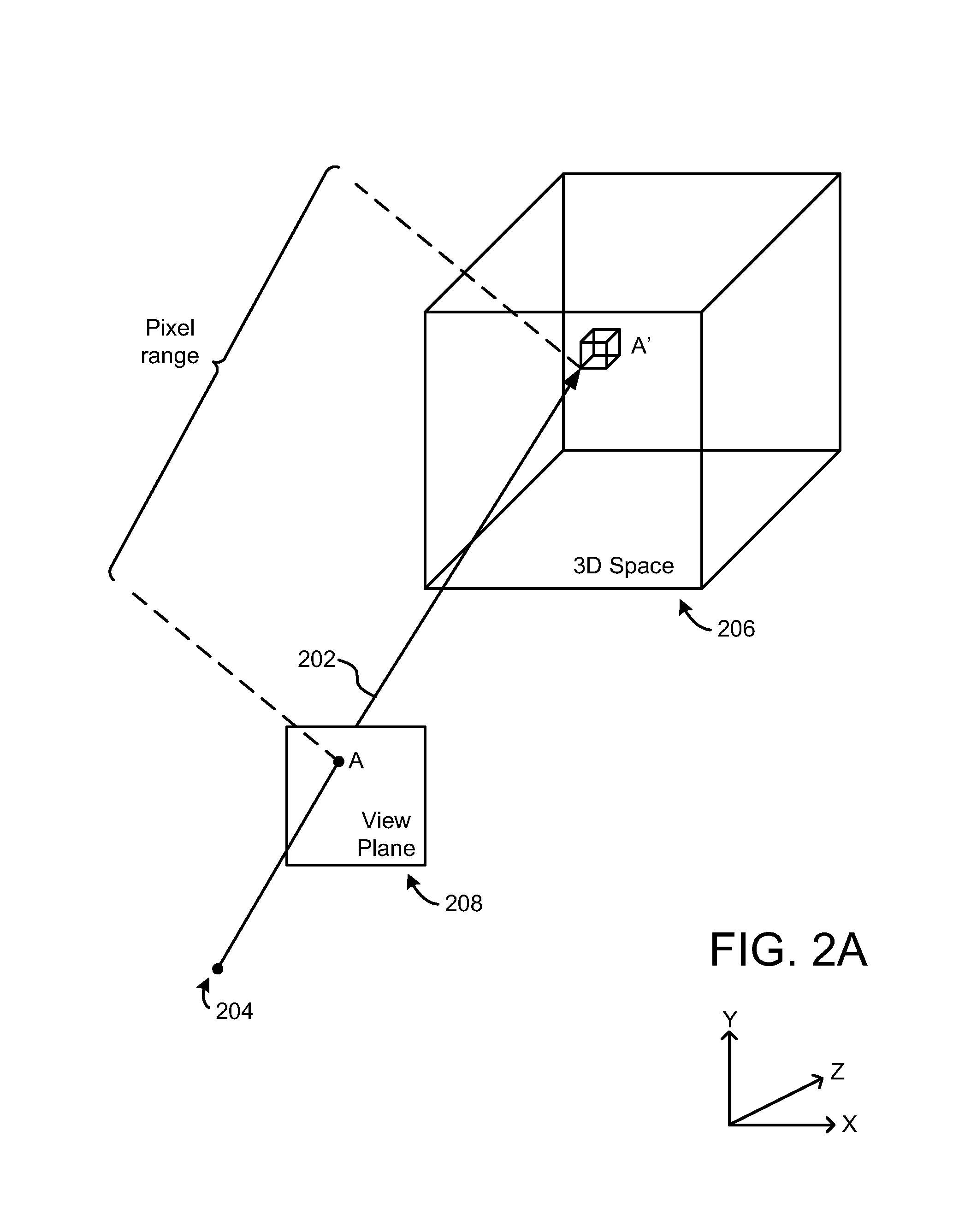Volume rendering a graphical 3D scene containing a 3D volumetric object and atmospheric effects
a volumetric object and atmospheric effect technology, applied in the field of polygon-based graphics systems, can solve the problems of unrealistic cues, affecting training, and not always working well in polygon-based graphics systems for other volumetric obscurants
- Summary
- Abstract
- Description
- Claims
- Application Information
AI Technical Summary
Benefits of technology
Problems solved by technology
Method used
Image
Examples
Embodiment Construction
[0022]In one or more embodiments of the present disclosure, polygon-based volumes are implemented for display in frames on a display device depicting visual scenes. This may advantageously enable a modeler to define the volume's overall shape and appearance. In one or more embodiments, the volume may be modeled as a set of polygons that define a convex hull. The convex hull may have an exterior surface and an interior surface. In one or more embodiments, the volume may be used advantageously to simulate multiple volumetric-type obscurants, e.g., fog, dust, smoke, trees, bushes, etc. In one or more embodiments, the volume-defining polygons use characteristics (e.g., texture, color, etc.) to control the visual appearance of the outside and / or inside of the volume.
[0023]In one or more embodiments, as the volume-defining polygons are rendered, the attributes for each pixel are recorded in dedicated volume buffers. The buffers may store the distance to the front of the volume (entry) for...
PUM
 Login to View More
Login to View More Abstract
Description
Claims
Application Information
 Login to View More
Login to View More - R&D
- Intellectual Property
- Life Sciences
- Materials
- Tech Scout
- Unparalleled Data Quality
- Higher Quality Content
- 60% Fewer Hallucinations
Browse by: Latest US Patents, China's latest patents, Technical Efficacy Thesaurus, Application Domain, Technology Topic, Popular Technical Reports.
© 2025 PatSnap. All rights reserved.Legal|Privacy policy|Modern Slavery Act Transparency Statement|Sitemap|About US| Contact US: help@patsnap.com



